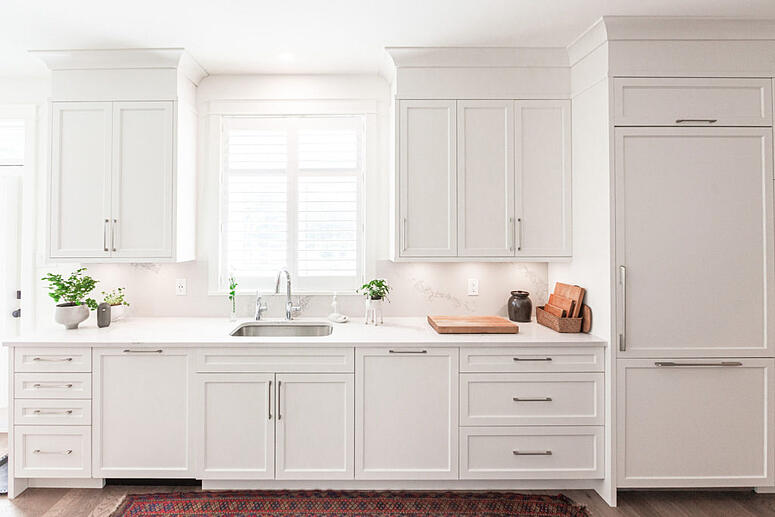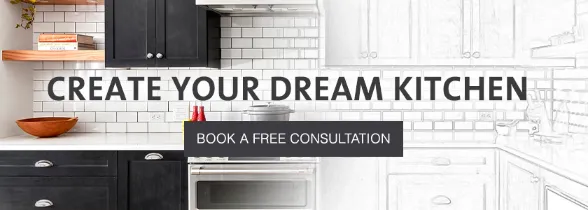25/02/2022 • Blog, Best in Class, Design Tips
What is The Janka Hardness Scale?
Estimate read time: 3 minutes (800 words)
If you’ve been researching different wood species, maybe for your new kitchen cabinets, you’ve probably come across something referred to as the Janka hardness scale.
But what is it? And what does it have to do with your kitchen cabinets?
At Deslaurier, we specialize in custom cabinetry. We know that selecting wood species for your cabinets will in all likelihood be an aesthetic decision. We also know how important it is to ensure the cabinets you choose will have the strength and durability that your unique kitchen and lifestyle will require.
With that in mind, let’s take a look at what the Janka hardness scale is and how it can help you determine which wood species is right for your kitchen cabinets.
|
Table of Contents |
|
What is the Janka Hardness Scale? Janka Hardness Scale & Kitchen Cabinets |
What Is the Janka Hardness Scale?
The Janka hardness scale is a measurement that determines a wood sample’s resistance to denting or wear.
It was developed in 1906 by Gabriel Janka, an Austrian-born American wood researcher. His method is now accepted as the standard for ranking a wood’s hardness.
The results of the test are straightforward: the higher the number on the scale, the harder and more resistant to dents or scratches the wood is.
Here are some popular kitchen cabinet wood species and what they score on the Janka hardness scale:
These are just a few of the most popular wood species for kitchen cabinets. If you want to see the full Janka hardness scale, check out this table.
How Is Hardness Measured on the Janka Hardness Scale?
The Janka hardness test measures the force necessary to embed a 0.444-inch steel ball to half of its diameter into a piece of wood. The chosen wood sample is traditionally 2 inches by 6 inches with a thickness of at least 6-8mm.
The results of the Janka test then determine the pounds of force (lbf) required to submerge the steel ball to half its diameter within a specific wood sample.
For example, maple scores a 1450 on the Janka scale. That means it takes 1450 pounds of force (lbf) for the steel ball to embed halfway into the sample of maple wood.
Searching for the perfect custom cabinets for your kitchen? You've come to the right place. Book a free consultation with a Deslaurier expert today!
Janka Hardness Scale and Kitchen Cabinets
It’s important to note that the Janka hardness scale is primarily used for flooring. Since floors will take the brunt of most weight and abuse, knowing how resilient different wood species are is invaluable to the industry.
However, we know that kitchen cabinets will also be subjected to daily wear and tear. That’s why it’s valuable to understand where each wood stands, especially if you live in an active home with children and pets.
Birch and Maple are considered some of the best paint-grade wood surfaces available for kitchen cabinets. In addition to their smooth surfaces, they also have impressive Janka ratings at 1260 and 1450, respectively.
Why does that matter? It means that their high durability will hold up well to dents and damage, which will help prevent the painted finish from cracking.
Compare that with the low hardness rating of poplar or alder. Both wood species are excellent for applying paint, but their weaker resiliency to dents and damage can result in the finish splitting.
This information is useful to know if you’re worried about the wear and tear your kitchen cabinets may succumb to.

Other Cabinet Durability Concerns
The Janka scale is a good tool to reference when looking at wood species. However, it is certainly not the be all and end all when it comes to making a selection for your kitchen cabinets.
Other factors like water resistance, heat resistance, and the applied finish can impact the overall durability of your cabinets.
Since the Janka scale is used for natural hardwoods and softwoods, alternative cabinet materials such as MDF, Thermofoil, or Textured Melamine are not measured.
These cabinet materials will have their own unique durability qualities and concerns. Thermofoil, for example, is extremely susceptible to heat damage. MDF and melamine, on the other hand, will both be vulnerable to water damage.
To see how these materials compare to natural woods, check out these articles!
Discover Deslaurier Custom Cabinets
If you have your eye on custom cabinetry, then you’ve come to the right place.
Deslaurier Custom Cabinets has everything you need! With over 40 years of experience to our name, we provide our clients with a fully customized design process with our talented team of designers.
Book a free consultation with a Deslaurier kitchen expert at our Ottawa showroom!
Interested in becoming an authorized Deslaurier dealer? Visit our Become a Dealer page to learn more!
.png?width=224&height=80&name=Final%20(3).png)



